Copie conforme |Review | Reseña [ESP/ENG]
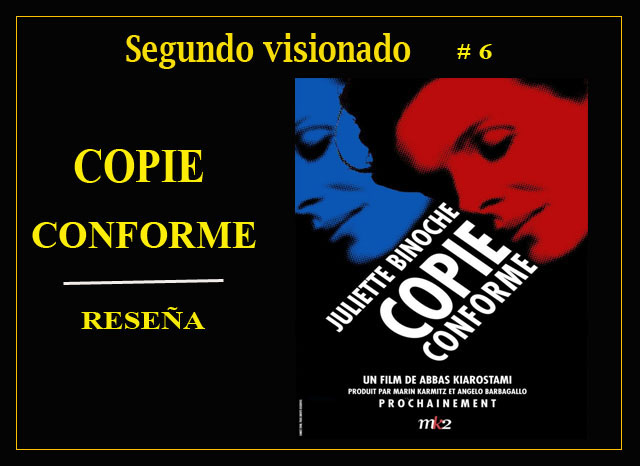
Nuestra capacidad de crear ilusiones es inmensa, infinita. De hecho, si nos proponemos podemos vivir completamente aislados de la realidad. Pero a veces la frontera entre ilusión y realidad es tan movible y difusa que no es fácil reconocer sí estamos en una u otra.
Esta película, Copia conforme (2010), del desaparecido cineasta iraní, Abbas Kiarostami (1940-2016), utiliza la obra de arte como metáfora para crear un juego de simulaciones, en el que siempre estamos retados a saber sí lo que estamos viendo es real o es parte de una fantasía alimentada por personas condescendientes.

James Miller (Willian Shimell) es un investigador ingles que escribe sobre el mundo del arte. Ha sido invitado a Italia a dar una conferencia sobre su último libro, en el que plantea una tesis muy particular: que para el disfrute estético del espectador es irrelevante si está en presencia de un original o de una copia.
Entre las personas que asisten a la conferencia está Elle (Juliette Binoche), una francesa que se ha establecido en La Toscana y regenta una tienda de copias de obras famosas. Estando en la conferencia se aparece su hijo, un adolescente de algunos trece años. El muchacho la requiere con insistencia y no le deja escuchar la conferencia. Elle decide retirarse pero antes de hacerlo le deja un mensaje al destacado escritor.
Elle sale con su hijo a un café y entre ambos se produce una situación incómoda porque el muchacho le presta más atención a su juego de video portátil que a la conversación con la madre. En un momento el niño le pregunta por qué ha comprado tantos libros de James, ella le responde que son para regalar. Y el muchacho le recuerda, en tono de burla, que siempre ha estado enamorada de él, como si fuera su amor secreto o algo así.
James recibe el mensaje y ve que se trata de una invitación. Llega a la tienda de Elle y ella en un gesto hospitalario lo invita a que aprovechen la tarde tomando café y visitando algunos sitios hermosos de los alrededores. James se siente complacido, acepta la invitación, pero le recuerda que debe estar de regreso a las nueve de la noche.
Durante el viaje ambos sostienen una conversación que partiendo del tema del libro los va llevando a profundizar en sus asuntos personales.
Visitan un sitio famoso donde está “el árbol de oro”, que según la leyenda trae buena suerte a los casados. Elle, rememora el momento y ¿le recuerda? a James que allí contrajo matrimonio quince años atrás.
Mientras están en una cafetería la dueña del local aprovecha una salida de James para darle consejos a Elle sobre la relación con su esposo. La dueña asume que son pareja y Elle en ningún momento la desmiente.
En todo el resto de la película se establece entre estos dos una especie de juego de rolles en el que no se sabe si están actuando o en realidad son una pareja que inventó una salida extraña y novedosa para relanzar su fallida relación matrimonial.
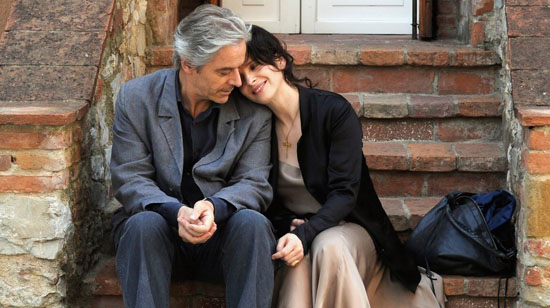
Sobre el tema yo tengo mis conclusiones pero no se las voy a adelantar por si en algún momento pueden ver la película.


Esta es la única película que he visto de este aclamado director y la verdad es que me ha parecido estupenda.
Su planteamiento de la validez de la copia es realmente interesante. Cuando el espectador común está viendo una obra de arte le da igual si lo que está viendo es una falsificación o no; el disfrute y el goce estético no distinguen copia de original. De hecho algunos museos por estrategia de seguridad exponen copias en lugar de los originales. Igual puede ocurrir en la música, son muchas las interpretaciones que superan con creces a las que han hecho los creadores “originales”. Al final, en estos temas del arte, todo es un asunto de percepción personal.
El director no está defendiendo la idea del plagio ni mucho menos, sino que está planteando que el asunto de la “validez” de lo original pertenece a otro terreno distinto al del placer o el disfrute, es más un asunto mercantil y de poder.
Este tema de lo que es “verdadero” o no, sirve para desarrollar una película donde las situaciones pueden ser interpretadas de muchas maneras. El director todo el tiempo está tendiendo trampas al espectador, haciéndolo dudar si quienes hablan están actuando o son lo que dicen que son. ¿Son esposos o desconocidos? Es una incógnita que se mantiene durante todo el metraje. Aparentemente James y Elle son unos desconocidos, pero muchas veces parece que no fuese así.
Uno de los recursos muy utilizados en esta narrativa para crear confusión es el cambio de sujetos. Así por ejemplo, cuando James explica cómo le surgió la idea para hacer su libro, dice que fue a partir de la imagen de una madre con su hijo en una plaza de Florencia, se refiere a unos ellos, sujetos distantes y desconocidos. Esto lo dice mientras está tomando café con Elle, y ella le responde con: “esos éramos nosotros”. Ante esa respuesta el escritor no muestra ninguna perplejidad, ni sorpresa, como si lo supiera de siempre.
También nos deja ver claro el director las trampas que nos tiende la percepción. Hay una escena muy buena donde se presentan a un hombre y una mujer de espaldas a la cámara, gesticulan como si estuvieran discutiendo, y se escucha claramente como el hombre regaña a alguien, cualquiera pensaría qué es a la mujer. Luego el director cambia de plano y muestra que el hombre lo que está haciendo es hablar por el cell. Se burla del espectador, como diciéndoles: ajá, los embromé, cayeron por inocentes, no estaban peleando nada, jajaja.
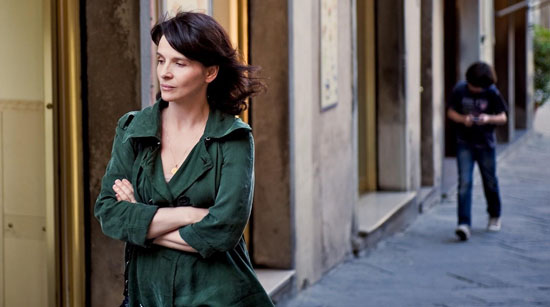
Más allá de si lo que estamos viendo es una simulación o una realidad, la película también quiere destacar los conflictos de la vida en pareja. Elle es una mujer que echa mucho de menos una relación más cálida con su esposo, donde estén presentes los detalles.
Algo que la hace sufrir y le resulta completamente incomprensible es que el esposo se olvide del día en que cumplieron quince años de casados. Ese día, el hombre llegó muy cansado del trabajo y sencillamente se quedó dormido. No hubo regalos, no hubo flores, no hubo salida romántica…
Un asunto que queda flotando en el ambiente es si dos personas con intereses distintos pueden convivir manteniendo un ambiente de amor. James es un hombre centrado en sus logros personales, con un temperamento frío, sin mucho valor de los recuerdos o la nostalgia.
Elle, es todo lo contrario, desearía una compañía que le hiciera sentir la cercanía y el amor. No se resigna a que después de un tiempo: “entre las parejas sigue existiendo el amor pero se manifiesta de otras maneras”. Le encantaría que el fuego de la pasión nunca se extinguiera.

Juliette Binoche, Elle, logra en esta película una interpretación memorable e inolvidable. Quizá por ello el jurado de Cannes la premió como la mejor actriz en ese año 2010. Desde el comienzo de la película su mirada nos sitúa en la piel de una mujer que desea de nuevo encontrar el amor. Una mujer que se niega a aceptar el desencanto de una relación fría y desabrida. Esta mujer se las juega todas por tratar de que su “ilusión” se haga verdadera, insiste, insiste e insiste sin descanso, tratando de llegar al corazón del otro; quizá le resulta demasiado duro aceptar la realidad.
Desde el punto de vista técnico-cinematográfico la película presenta cuestiones interesantes. A este director le encanta la cámara fija, le gustan esas tomas al estilo antiguo donde la cámara no sigue a los personajes sino que los deja entrar y salir del fotograma.
Un asunto que me llamó la atención es su forma de filmar los diálogos en el interior de los carros. Acá se ve claramente que lo que se proyecta en el parabrisas no son siempre imágenes del exterior, es como si estuviese corriendo allí una película paralela. Alguno de ustedes seguro que le dará alguna explicación a eso.
Esta es una de esas películas que te dejan con muchas interrogantes, donde las cosas pueden interpretarse de muchas maneras. Además, los diálogos son tan interesantes que provoca hacer una recopilación de citas. Es el tipo de cine que se puede ver una y otra vez. Ojalá tengan la oportunidad de visionarla algún día.
Gracias por tu tiempo.
Calificación.



Our capacity to create illusions is immense, infinite. In fact, if we want to, we can live completely isolated from reality. But sometimes the boundary between illusion and reality is so shifting and blurred that it is not easy to recognize whether we are in one or the other.
This film, Conforming Copy (2010), by the late Iranian filmmaker, Abbas Kiarostami (1940-2016), uses the work of art as a metaphor to create a game of simulations in which we are always challenged to know whether what we are seeing is real or part of a fantasy fed by condescending people.

James Miller (William Shimell) is an English researcher who writes about the art world. He has been invited to Italy to give a lecture on his latest book, in which he puts forward a very particular thesis: that for the aesthetic enjoyment of the viewer it is irrelevant whether he is in the presence of an original or a copy.
Among the people attending the lecture is Elle (Juliette Binoche), a Frenchwoman who has settled in Tuscany and runs a store selling copies of famous works. While at the conference, her son, a teenager of about thirteen, appears. The boy demands her insistently and does not let her listen to the lecture. Elle decides to leave, but before doing so she leaves a message for the prominent writer.
Elle goes out with her son to a café and an awkward situation arises between them because the boy pays more attention to his portable video game than to the conversation with his mother. At one point the boy asks her why she has bought so many of James' books, she replies that they are for gifts. And the boy teasingly reminds her that she's always had a crush on him, like she's his secret love or something.
James receives the message and sees that it is an invitation. He arrives at Elle's store and she, in a hospitable gesture, invites him to spend the afternoon having coffee and visiting some beautiful places in the surroundings. James is pleased, accepts the invitation, but reminds her that he must be back by nine in the evening.
During the trip, the two have a conversation that starts with the subject of the book and takes them deeper into their personal affairs.
They visit a famous place where there is "the golden tree", which according to legend brings good luck to married couples. Elle reminisces about the moment and reminds James that she was married there fifteen years ago.
While they are in a coffee shop, the owner of the place takes advantage of James' departure to give Elle advice about her relationship with her husband. The owner assumes that they are a couple and Elle never denies it.
Throughout the rest of the film a sort of role-playing game is established between these two in which it is not clear whether they are acting or are actually a couple who invented a strange and novel way out to relaunch their failed marital relationship.

I have my own conclusions on the subject but I won't give them away in case you are able to see the film at some point.


This is the only film I've seen of this acclaimed director and the truth is that I thought it was great.
His approach to the validity of the copy is really interesting. When the common spectator is watching a work of art, he doesn't care if what he is seeing is a forgery or not; the enjoyment and aesthetic enjoyment does not distinguish between copy and original. In fact, some museums, for security reasons, exhibit copies instead of the originals. The same can happen in music, there are many interpretations that far surpass those made by the "original" creators. In the end, in these matters of art, everything is a matter of personal perception.
The director is not defending the idea of plagiarism, far from it, but rather he is arguing that the issue of the "validity" of the original belongs to a different realm than that of pleasure or enjoyment; it is more a matter of commerce and power.
This issue of what is "true" or not, serves to develop a film where situations can be interpreted in many ways. The director is all the time setting traps for the viewer, making him doubt whether those who speak are acting or are what they say they are. Are they spouses or strangers? It's an unknown that lingers throughout the film. Apparently James and Elle are strangers, but many times it seems that this is not the case.
One of the resources widely used in this narrative to create confusion is the change of subjects. For example, when James explains how he got the idea for his book, he says that it was from the image of a mother with her son in a square in Florence, he refers to them, distant and unknown subjects. He says this while he is having coffee with Elle, and she responds with: "that was us". Before this answer the writer shows no perplexity, no surprise, as if he had always known it.
The director also makes it clear to us the traps that perception sets for us. There is a very good scene where a man and a woman are presented with their backs to the camera, they gesticulate as if they were arguing, and you can clearly hear how the man scolds someone, anyone would think it is the woman. Then the director changes the shot and shows that the man is talking on the cell phone. He mocks the viewer, as if telling them: aha, I fooled them, they fell for innocents, they were not fighting anything, hahaha.

Beyond whether what we are seeing is a simulation or a reality, the film also wants to highlight the conflicts of life as a couple. Elle is a woman who misses a warmer relationship with her husband, where details are present.
Something that makes her suffer and is completely incomprehensible to her is that her husband forgets the day they celebrated their fifteenth wedding anniversary. That day, the man came home from work very tired and simply fell asleep. There were no gifts, no flowers, no romantic getaway...
One issue that hangs in the air is whether two people with different interests can live together while maintaining an atmosphere of love. James is a man focused on his personal achievements, with a cold temperament, without much value of memories or nostalgia.
Elle, is the opposite, she would wish for a company that would make her feel closeness and love. She is not resigned to the fact that after a while: "love still exists between couples but it manifests itself in other ways". He would love for the fire of passion to never die out.

Juliette Binoche, Elle, gives a memorable and unforgettable performance in this film. Perhaps that is why the Cannes jury awarded her as the best actress in that year 2010. From the beginning of the film her gaze places us in the skin of a woman who wants to find love again. A woman who refuses to accept the disenchantment of a cold and unsavory relationship. She insists, insists and insists without rest, trying to reach the heart of the other; perhaps it is too hard for her to accept reality.
From a technical-cinematographic point of view, the film presents interesting issues. This director loves the fixed camera, he likes those old style shots where the camera does not follow the characters but lets them come in and out of the frame.
One issue that caught my attention is his way of filming the dialogues inside the cars. Here you can clearly see that what is projected on the windshield are not always images of the exterior, it is as if a parallel movie was running there. Some of you will surely find an explanation for that.
This is one of those movies that leave you with a lot of questions, where things can be interpreted in many ways. Moreover, the dialogues are so interesting that it provokes a compilation of quotes. It's the kind of film you can watch over and over again. Hopefully you will have the opportunity to see it someday.
Thanks for your time.
Translated with www.DeepL.com/Translator (free version)

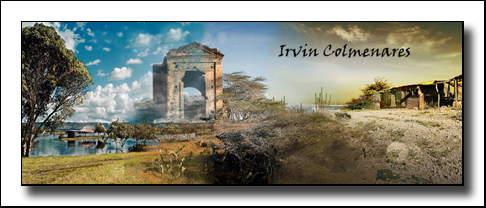




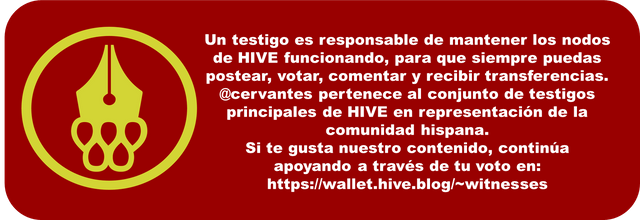
Te invito a apoyar este proyecto como witness y a formar parte de esta gran comunidad uniéndote a su Discord en el siguiente enlace:
Discord de la comunidad Cervantes

You can vote for @ocd-witness, with HiveSigner or on Hive Witnesses.

Otras reseñas de esta serie | Other reviews of this series:
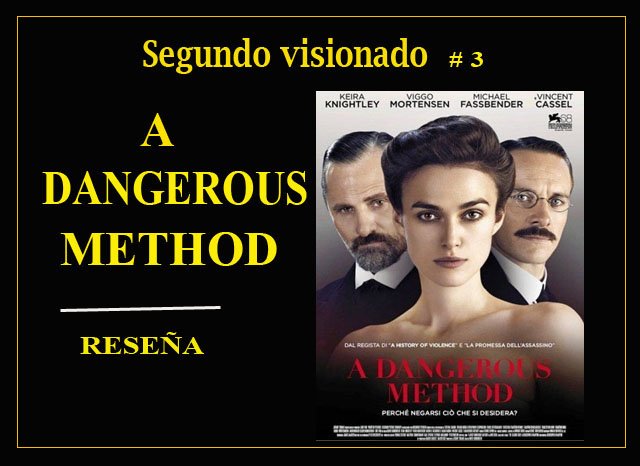 A DANGEROUS METHOD
A DANGEROUS METHOD 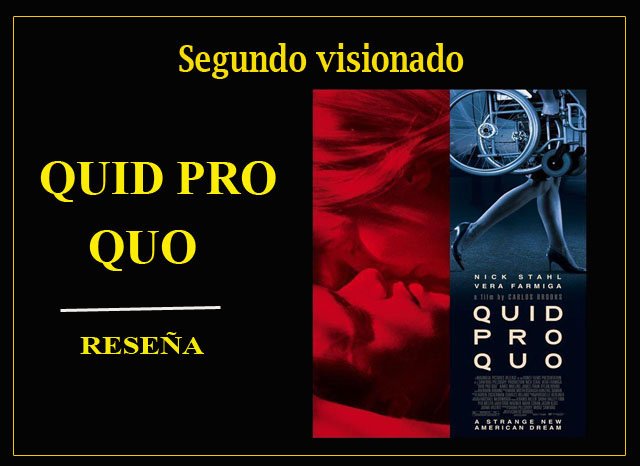 QUID PRO QUO
QUID PRO QUO REALITY
REALITY

Otras reseñas de esta serie | Other reviews of this series:
 A DANGEROUS METHOD A DANGEROUS METHOD |  QUID PRO QUO QUID PRO QUO |  REALITY REALITY |

https://twitter.com/irvinc1/status/1464584235302408195
The rewards earned on this comment will go directly to the person sharing the post on Twitter as long as they are registered with @poshtoken. Sign up at https://hiveposh.com.
Una película con una abordaje extraño el juego realidad-percepción siempre resulta interesante porque como señalas "las cosas pueden interpretarse de muchas maneras."
Me encantará verla y capaz que hago mi "comentario Intencionado" desde una perspectiva muy distinta a la tuya. Saludos 🤓
Es una película muy buena y tiene unos diálogos interesantes. Creo que te va a gustar. Muchas gracias por la visita y el comentario, estimada @damarysvibra. Que estés bien.
Hola, @irvinc, esta película me gustó tanto cuando la vi, hace algún tiempo, que le hice un cuadro.
Oye, que bien. Ese cuadro te quedó muy lindo. Tienes mucha habilidad para la pintura. A mí también me gusta mucho esa película. Gracias por la visita y el comentario, estimada @charjaim . Que estés bien. Saludos.
Good review. Interesting film to take into account.
Thank you so much.